 W
WMarina Abramović is a Serbian conceptual and performance artist, philanthropist, writer, and filmmaker. Her work explores body art, endurance art and feminist art, the relationship between the performer and audience, the limits of the body, and the possibilities of the mind. Being active for over four decades, Abramović refers to herself as the "grandmother of performance art". She pioneered a new notion of identity by bringing in the participation of observers, focusing on "confronting pain, blood, and physical limits of the body". In 2007, she founded the Marina Abramović Institute (MAI), a non-profit foundation for performance art.
 W
WOscar Korbla Mawuli Awuku, better known as Yonga Arts, the name of his artistic brand, is a Ghanaian body artist, painter, and sculptor.
 W
WAbel Azcona is a Spanish artist, specializing in performance art. His work includes installations, sculptures, and video art. He is known as the "enfant terrible" of Spanish Contemporary Art. His first works dealt with personal identity, violence and the limits of pain; his later works are of a more critical, political and social nature.
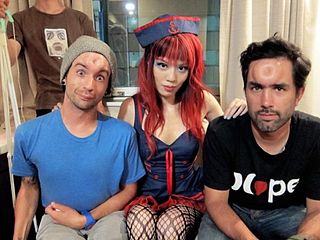 W
WBagel head is a type of body modification pioneered in Canada and practiced in the Japanese underground scene. It is a temporary swelling distortion of the forehead created by a saline drip and often shaped to resemble a bagel or doughnut. In 2012, after appearing on a National Geographic TV special, this practice became the subject of sensationalism as news outlets worldwide misleadingly declared it a "Japan trend".
 W
WA bindi is a colored dot worn on the center of the forehead, originally by Hindus and Jains from the Indian subcontinent. The word bindu dates back to the hymn of creation known as Nasadiya Sukta in the Rigveda Mandala 10. Bindu is considered the point at which creation begins and may become unity. It is also described as "the sacred symbol of the cosmos in its unmanifested state".
 W
WBody marbling is a painting process similar to paper marbling, in which paint is floated on water and transferred to a person's skin. Unlike the traditional oil-based technique for paper, neon or ultraviolet reactive colours are typically used, and the paint is water-based and non-toxic. The term "body marbling" was coined in 2011 by Brad Lawrence of Black Light Visuals. Body marbling has become popular at festivals.
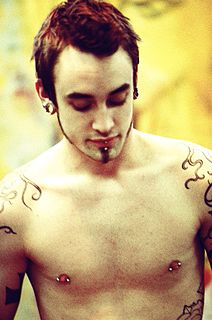 W
WBody piercing, which is a form of body modification, is the practice of puncturing or cutting a part of the human body, creating an opening in which jewelry may be worn, or where an implant could be inserted. The word piercing can refer to the act or practice of body piercing, or to an opening in the body created by this act or practice. It can also, by metonymy, refer to the resulting decoration, or to the decorative jewelry used. Piercing implants alter body and/or skin profile and appearance. Although the history of body piercing is obscured by popular misinformation and by a lack of scholarly reference, ample evidence exists to document that it has been practiced in various forms by multiple sexes since ancient times throughout the world.
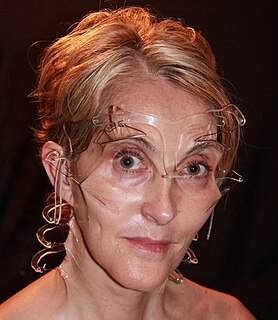 W
WRocío Boliver is a Mexican performance artist who creates body art about the repression of women in Mexico. In 1992, Boliver began her career as a performance artist reading her porno-erotic writings. Boliver has a background in video and Mexican theatre. From 1994 to 2007 she worked in theatre projects, performance and contemporary art, collaborating with the playwright Juan José Gurrola. Boliver has performed at a variety of venues such as museums, raves, universities, galleries, activist meetings and TV programs. An underground cultural icon in Mexico, Boliver is part of a Goth-art scene, and has presented works at alternative forums such as the Sadomasochism National Festival. Boliver's work has been presented in North America, South America, Europe and Asia.
 W
WLeigh Bowery was an Australian performance artist, club promoter, and fashion designer. Bowery was known for his flamboyant and outlandish costumes and makeup as well as his performances.
 W
WChristopher Lee Burden was an American artist working in performance, sculpture and installation art. Burden became known in the 1970s for his performance art works, including Shoot (1971), where he arranged for a friend to shoot him in the arm with a small-caliber rifle. A prolific artist, Burden created many well-known installations, public artworks and sculptures before his death in 2015.
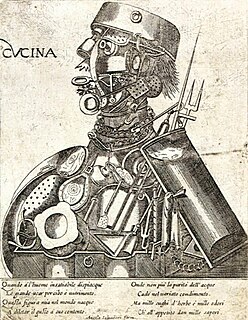 W
WCyborg art, also known as cyborgism, is an art movement that began in the mid-2000s in Britain. It is based on the creation and addition of new senses to the body via cybernetic implants and the creation of art works through new senses. Cyborg artworks are created by cyborg artists; artists whose senses have been voluntarily enhanced through cybernetic implants. Among the early artists shaping the cyborg art movement are Neil Harbisson, whose antenna implant allows him to perceive ultraviolet and infrared colours, and Moon Ribas whose implants in her feet allow her to feel earthquakes and moonquakes. Other cyborg artists include:Manel De Aguas, a Catalan photographer who developed fins that allow him to perceive atmospheric pressure, humidity and temperature through a couple of implants at each side of his head. Joe Dekni, an artist who has developed and installed a radar system in his head. The sensory system includes two implants in his cheekbones. Pau Prats, creator of a system that allows him to feel the ultraviolet ray levels that reach his skin. Alex Garcia, whose sensor installed in his chest allows him to feel the air quality levels around him. Kai Landre, a musician developing two implants to hear the sound of the particles affected by the collusion of cosmic rays.
 W
WDemi's Birthday Suit, or The Suit, was a trompe-l'œil body painting by Joanne Gair photographed by Annie Leibovitz that was featured on the cover of the Vanity Fair August 1992 issue to commemorate and exploit the success of Leibovitz's More Demi Moore cover photo of Demi Moore one year earlier. As an example of modern body painting artwork, it raised the profile of Gair in pop culture as an artist in that genre.
 W
WDisappearing Model is a trompe-l'œil body painting by Joanne Gair that was part of episode 1.19 or 119 of Ripley's Believe It or Not!, which was the highest-rated episode. The number 119 represents the nineteenth episode of the first season of the show, which aired exclusively on the TBS superstation.
 W
WMarco Donnarumma is an Italian performance artist, new media artist and scholar based in Berlin. His work addresses the relationship between body, politics and technology. He is widely known for his performances fusing sound, computation and biotechnology. Ritual, shock and entrainment are key elements to his aesthetics. Donnarumma is often associated with cyborg and posthuman artists and is acknowledged for his contribution to human-machine interfacing through the unconventional use of muscle sound and biofeedback. From 2016-2018 he was a Research Fellow at Berlin University of the Arts in collaboration with the Neurorobotics Research Lab at Beuth University of Applied Sciences Berlin.
 W
WValie Export is an avant-garde Austrian artist. She is best known for provocative public performances and expanded cinema work. Her artistic work also includes video installations, computer animations, photography, sculpture and publications covering contemporary art.
 W
WHuman branding or stigmatizing is the process by which a mark, usually a symbol or ornamental pattern, is burned into the skin of a living person, with the intention that the resulting scar makes it permanent. This is performed using a hot or very cold branding iron. It therefore uses the physical techniques of livestock branding on a human, either with consent as a form of body modification; or under coercion, as a punishment or to identify an enslaved, oppressed, or otherwise controlled person. It may also be practiced as a "rite of passage", e.g. within a tribe, or to signify membership of or acceptance into an organization.
 W
WJagua tattoo is a temporary form of skin decoration resulting from the application of an extract of the fruit Genipa americana, also known as jagua. This fruit has been used for body ornamentation and medicinal purposes in many areas of South America for centuries. It has only recently been introduced in North America and Europe as an addition to henna body art, also called mehendi, mehandi, or mehndi in India.
 W
WKetty La Rocca was an Italian artist during the 1960s and 70s. She was a leading exponent of body art and visual poetry movements.
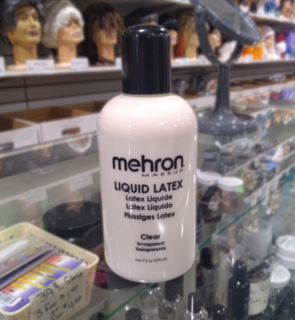 W
WLiquid latex is a compound often used for special effects makeup, body painting, mask making, and casting applications.
 W
WMehndi is a form of body art and temporary skin decoration usually drawn on hands or legs, in which decorative designs are created on a person's body, using a paste, created from the powdered dry leaves of the henna plant. It is a popular form of body art among the women of India, Bangladesh, Pakistan, Nepal, Iran, Maldives, and the Muslim population of Sri Lanka, and resembles similar practices found in North Africa and the Middle East. This kind of body art is called Mehndi Design in India, Pakistan, Bangladesh and Nepal. Whereas, in West it is called Henna Designs.
 W
WYouri Messen-Jaschin is an artist of Latvian origin, born in Arosa, Switzerland, in 1941. He often combines oils and gouaches. His favourite colors are: strong reds, yellows, greens, and blue. He also works in body painting, exhibiting his works in nightclubs.
 W
WLíza Morózova is a Russian female artist, psychologist, art therapist and columnist. Participant of more than 150 international art exhibitions and biennale in 17 countries. She lives in Moscow.
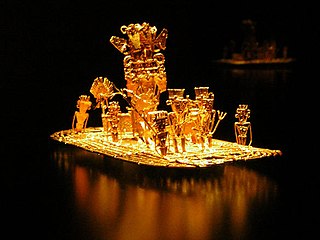 W
WThis article describes the art produced by the Muisca. The Muisca established one of the four grand civilisations of the pre-Columbian Americas on the Altiplano Cundiboyacense in present-day central Colombia. Their various forms of art have been described in detail and include pottery, textiles, body art, hieroglyphs and rock art. While their architecture was modest compared to the Inca, Aztec and Maya civilisations, the Muisca are best known for their skilled goldworking. The Museo del Oro in the Colombian capital Bogotá houses the biggest collection of golden objects in the world, from various Colombian cultures including the Muisca.
 W
WNyotaimori , often referred to as "body sushi", is the Japanese practice of serving sashimi or sushi from the naked body of a woman. Nantaimori (男体盛り) is the male equivalent.
 W
WORLAN is a French contemporary artist best known for her work with plastic surgery in the early to mid-1990s. ORLAN is known as a pioneer of carnal art, a form of self-portraiture that utilizes body modification to distort one's appearance. She adopted the pseudonym "ORLAN" in 1971, and capitalises each letter because, as ORLAN states, she has 'no desire to step back into rank.' She lives and works in Paris.
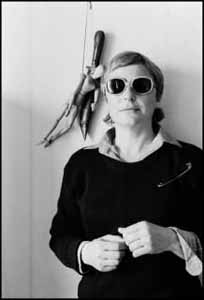 W
WGina Pane was a French artist of Italian origins. She studied at the École des Beaux-Arts in Paris from 1960 to 1965 and was a member of the 1970s Body Art movement in France, called "Art corporel".
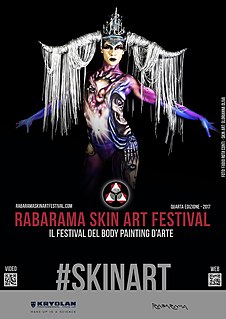 W
WThe Rabarama Skin Art Festival is an international festival dedicated to the promotion of artistic body painting, in the form known as "Skin Art". Begun in 2014, the festival is held every year in Italy from May to October, with selections in various Italian cities. The final event was held in Merano (BZ) in 2014, 2015, 2016 and 2017. The festival is supported by a brand leader in professional cosmetics, by the artist Rabarama, and by various Italian municipalities. The international media partner is the body painting magazine "Skin MarkZ" (USA).
 W
WSheila Canevacci Ribeiro is an transdisciplinary artist working on digital and Body arts as well as on conceptual fashion, technology and communication. She currently lives between São Paulo and Rome.
 W
WScarifying involves scratching, etching, burning / branding, or superficially cutting designs, pictures, or words into the skin as a permanent body modification. The body modification can take roughly 6–12 months to heal. In the process of body scarification, scars are purposely formed by cutting or branding the skin by various methods. Scarification is sometimes called cicatrization.
 W
WQasim Riza Shaheen is a British artist and writer based in Manchester. Working across participatory performance, installation, film and photography, Shaheen's practice explores memory, notions of beauty, sexuality, love and, more broadly, fundamental concerns about human nature.
 W
WStelarc is a Cyprus-born Australian performance artist raised in the Melbourne suburb of Sunshine, whose works focus heavily on extending the capabilities of the human body. As such, most of his pieces are centered on his concept that "the human body is obsolete". Until 2007 he held the position of Principal Research Fellow in the Performance Arts Digital Research Unit at Nottingham Trent University in Nottingham, England. He is currently furthering his research at Curtin University in Western Australia.
 W
WThe Windmill Theatre — now The Windmill International — in Great Windmill Street, London was for many years both a variety and revue theatre. The Windmill remains best known for its nude tableaux vivants, which began in 1932 and lasted until its reversion to a cinema in 1964. Many prominent British comedians of the post-war years started their careers working at this theatre.
 W
WThe World Bodypainting Festival (WBF) is a bodypainting festival and competition which is held annually in Austria. The festival used to be held in Pörtschach on lake Wörthersee, but since 2017 it has taken place in Klagenfurt. It is attended by artists from 50 nations and attracts over 30,000 spectators.
 W
WThe Yoruba tribal marks are scarifications which are specific identification and beautification marks designed on the face or body of the Yoruba people. The tribal marks are part of the Yoruba culture and are usually inscribed on the body by burning or cutting of the skin during childhood. The primary function of the tribal marks is for identification of a person's tribe, family or patrilineal heritage. Other secondary functions of the marks are symbols of beauty, Yoruba creativity and keeping mischievous children alive. This practice was popular among Yoruba people of Nigeria, Benin, and Togo. During the trans-Atlantic slave trade, tribal identification and facial stripes became important. Some repatriated slaves later reunited with their communities by looking at facial stripes.